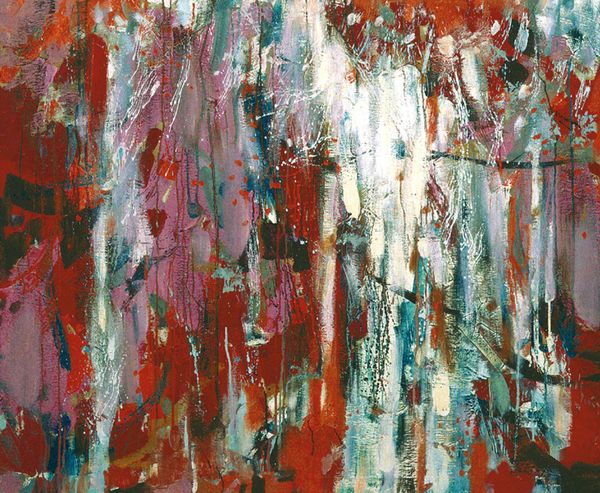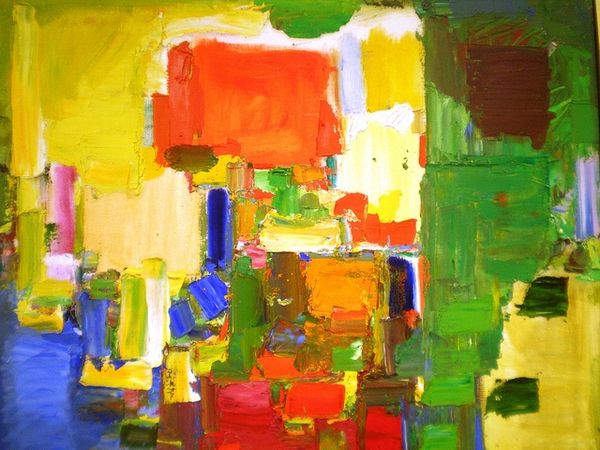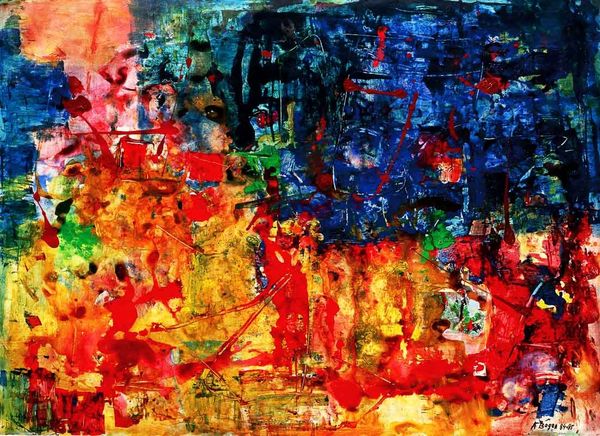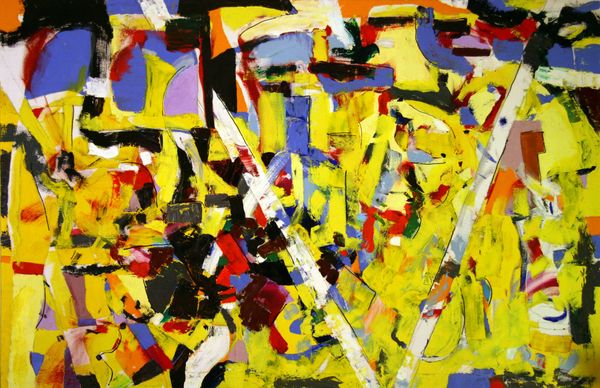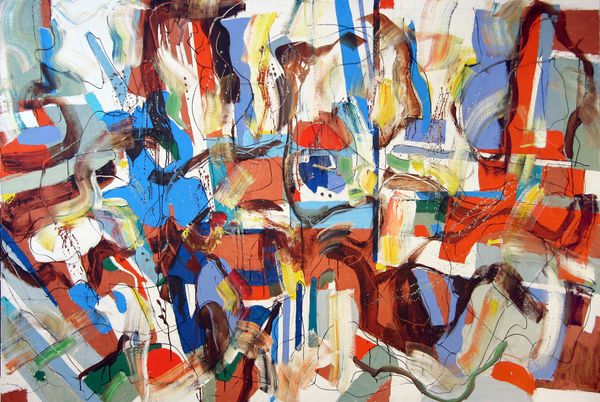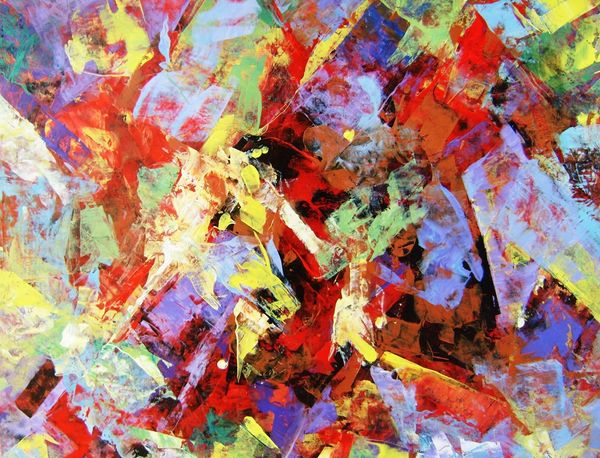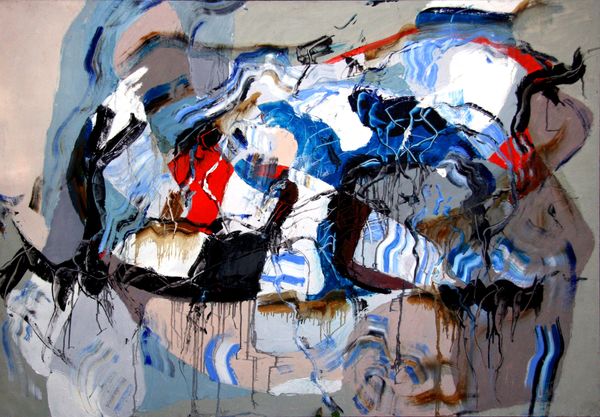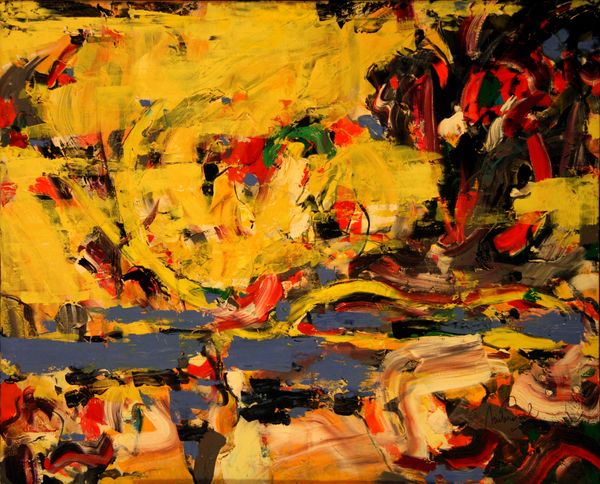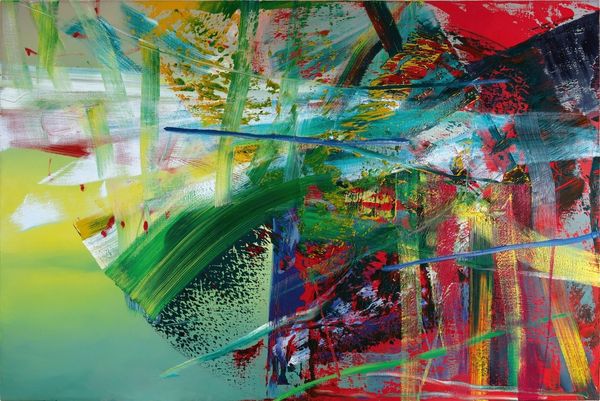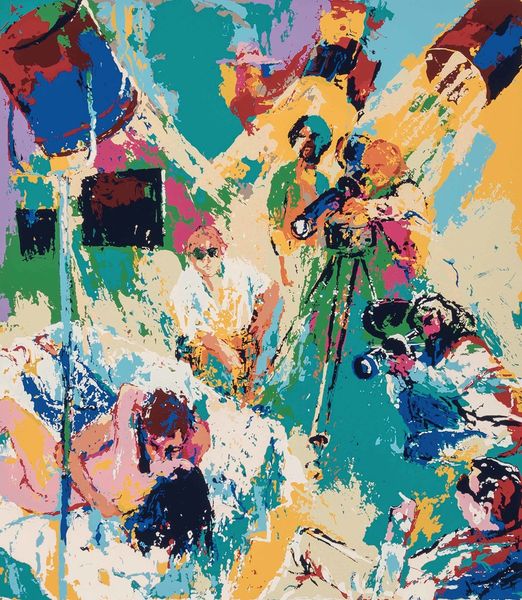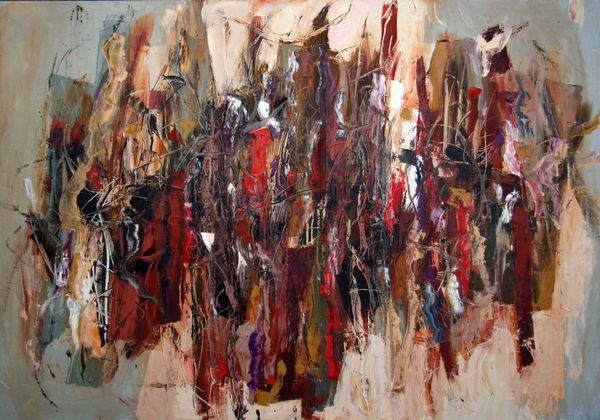
Copyright: Romul Nutiu,Fair Use
Editor: Romul Nutiu's "The Big Waterfall," created in 2002 using acrylics, just bursts with energy. It's an abstract piece, but I get a real sense of movement from the brushstrokes and the bold color palette. What’s your interpretation? Curator: Seeing this, I’m drawn to consider how abstract expressionism served as a potent form of cultural expression during and after the Cold War. These works, seemingly non-political, actually championed individual freedom against the backdrop of collectivist ideologies. This piece, created much later, evokes that spirit. Do you see how the energetic, almost chaotic application of paint might challenge more traditional, controlled forms of artistic expression that were often favored by authoritarian regimes? Editor: That’s interesting. I hadn’t considered it in that context. So, the act of painting so freely becomes a statement in itself? Curator: Exactly. And beyond that, consider the role of galleries and museums in showcasing these kinds of works. They become spaces not just for aesthetic appreciation but also for quiet defiance, promoting values of individuality and freedom of expression. Even today, presenting this piece allows a space to explore art’s function within a sociopolitical landscape. How do you think audiences today respond to works like this, knowing its historical context? Editor: I think understanding that history definitely adds another layer. It transforms the viewing experience and makes it much richer. Curator: Precisely! And recognizing this dynamic reminds us that art is never created or viewed in a vacuum, and understanding how artwork intersects with society is valuable to consider when forming our own opinion about artwork and museums. Editor: That gives me a new way of appreciating abstract expressionism! Thanks for shedding light on the historical and cultural layers.
Comments
No comments
Be the first to comment and join the conversation on the ultimate creative platform.
